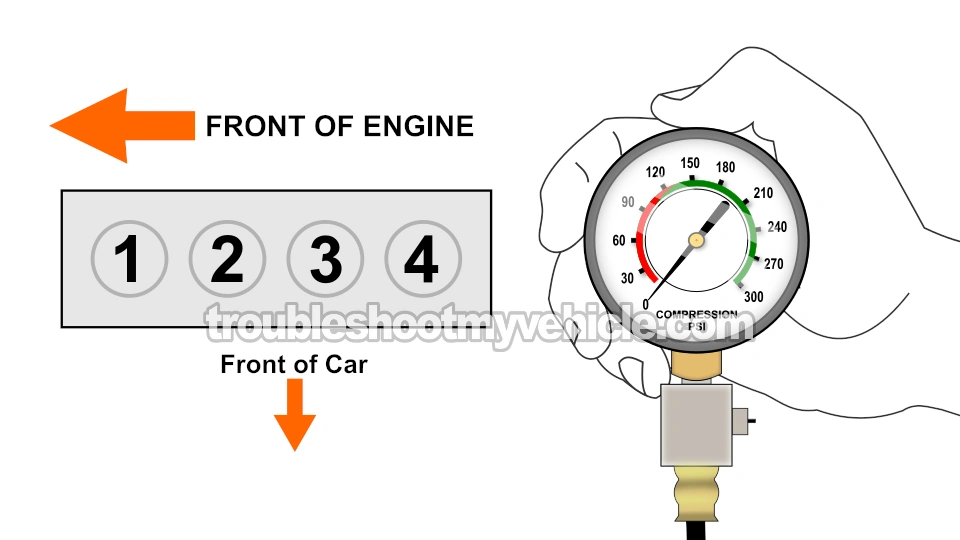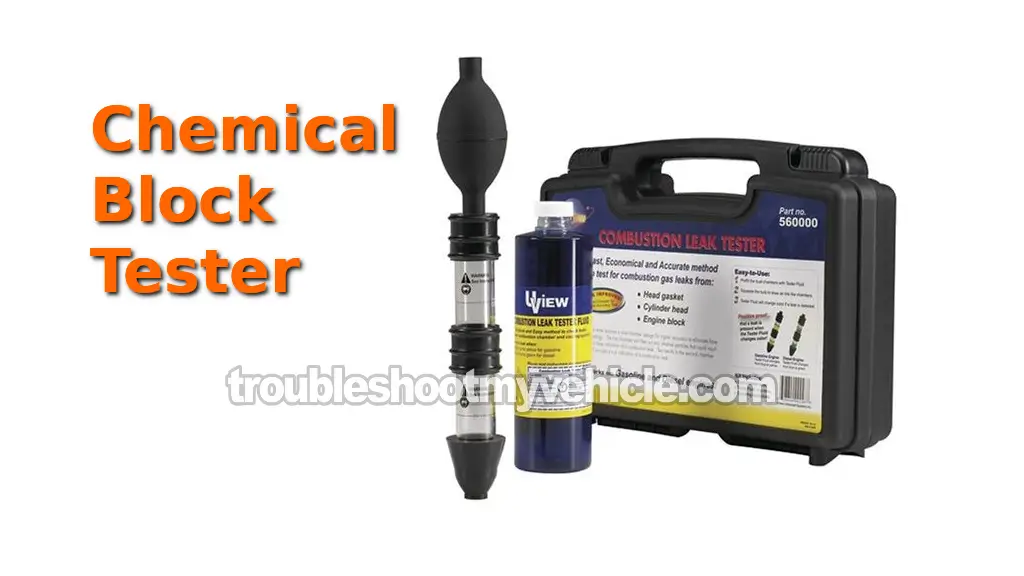HEAD GASKET TEST 3: Engine Compression Test

What leads a lot of folks to misdiagnose a blown head gasket on their Toyota is that, in their particular case, they checked the engine oil and it wasn't mixed with coolant. They checked to see if coolant shot out of the radiator (with cap removed) and it wasn't.
They never realized that a head gasket can get blown without causing the coolant to mix with the engine oil and without causing combustion gases from entering the cooling system. I have seen this enough to know that one more test has to be done.
How is this possible? Well, this happens because the head gasket has burned at a point between two cylinders (like in the image at the beginning of this tutorial), the resulting gap in the head gasket will let only the compression/combustion of one cylinder to leak into the other and vice-versa, but nothing else (like coolant). If this happens, in a Toyota, this will cause a no-start condition.
This condition can be very easily verified by doing a compression test. In this test step, I'll show you how and more importantly, how to interpret the compression test results to see if the head gasket is burned or not. This is what you'll do:
- 1
Remove all four COP ignition coils.
Remove all four spark plugs too. - 2
Thread in the compression tester by hand, on the first spark plug hole you're gonna' start with.
Do not use any tools to tighten the compression tester. Hand tightening the compression tester is more than enough to get the proper results. - 3
Have a helper crank the engine. Your job is to keep your eyeballs on the compression tester. The needle will climb, as the engine cranks, till it reaches the maximum cylinder compression. At the point it stops climbing, have your helper stop cranking the engine.
On a piece of paper, write down the reading and what cylinder it belongs to (you can use the image above to help you identify the cylinder). Repeat the above steps in the remaining 3 cylinders.
If your Toyota's head gasket is burned at a location between 2 cylinders, your compression test readings will give you 2 good compression readings and 2 compression readings that will be 0 PSI. Let me give you a more specific example:
Let's say that I tested my Toyota and I got the following cylinder compression readings:
- Cylinder #1 = 175 PSI
- Cylinder #2 = 165 PSI
- Cylinder #3 = 0 PSI
- Cylinder #4 = 0 PSI
As you can see from the above compression readings, cylinders #3 and #4 have 0 PSI readings. And this is a clear indication that the head gasket has burned at the point between them both. Now, in your specific case, you may not see those exact same cylinders with 0 PSI readings. It may be #1 and #2 or it may be #2 and #3, the main idea is that whatever cylinders are affected, they will always be side by side.
CASE 1: All cylinder compression readings where normal. These compression gauge readings confirm that the head gasket is OK and not burned at a point between two cylinders.
If you still suspect that you've got a blown head gasket on your hands, go to: TEST 4: Using A Chemical Block Tester (Combustion Leak Tester).
CASE 2: Two side by side cylinders had 0 PSI compression. This engine compression reading confirms that the head gasket is burned thru' at the point between those two cylinders. You'll need to replace the head gasket.
HEAD GASKET TEST 4: Using A Chemical Block Tester (Combustion Leak Tester)

Using a block tester, to check for a blown head gasket when the previous 3 tests don't confirm it, will tell you without a shadow of doubt if it's blown or not.
Why didn't I start of with this test? Because TEST 1, TEST 2, and TEST 3 usually pinpoint a blown head gasket condition in about 95% of the cases (not to mention you don't have to spend any $ to do them). It's the remaining hard to diagnose 5% percent where the effort of finding a block tester is worth it.
In a nutshell, this is how a block tester works:
- A blue liquid chemical, which is blue in color, is placed in the tester (see photo above).
- The tester assembly is then placed on the open radiator neck (you may have to drain some of the coolant in the radiator since this tool needs to ‘gulp’ some of the air inside the radiator).
- The rubber bellow is then squeezed to suck in the air up through the two fluid-filled chambers. As the air bubbles up through the fluid, it will cause a chemical reaction.
- If the blue chemical turns yellow (for gasoline engines), combustion gases are entering the radiator. This result confirms a head gasket failure, a cracked block, or a cracked cylinder head issue.
- If the blue chemical doesn't change color, you can conclude that you don't have a head gasket failure, a cracked block, or a cracked cylinder head issue.
Where can you get the chemical and block tester? At your local auto parts store or here:
Disclosure: As an Amazon Associate, I earn from qualifying purchases. If my tutorials help you, using these links is an easy way to support the site at no extra cost to you. Thank you!
More 1.8L Toyota Corolla Test Tutorials
There are several more ‘how to’ tutorials that I've written that are 1.8L Toyota specific, that may be of further help. You can find the ones that are located here in this index:
Here's a small sample of the tutorials you'll find in the index:
- How To Test Engine Compression (1993-2008 1.8L Toyota Corolla).
- Misfire Codes: How To Troubleshoot And Repair Them (1996-2008 1.8L Toyota Corolla).
- How To Test The Ignition COP Coils (1998-2008 1.8L Toyota Corolla).
- Diagnosing A Toyota Corolla Misfire Case Study.

If this info saved the day, buy me a beer!




